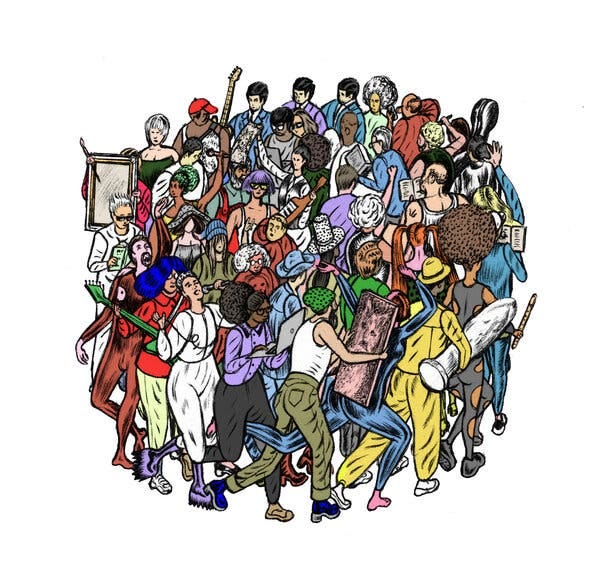Riskophilia
“We stopped embracing risk and started trying to eliminate it. We went from riskophilia to riskophobia. […] Embracing risk can make you antifragile by building resilience and adaptability; running from it can make you fragile by removing opportunities to build the same. […] The shift from optimism to pessimism, from growth to degrowth, from hope to doom, and from riskophilia to riskophobia was the result of a cultural movement, and we need a cultural movement in the other direction to get our swagger back. […] A movement got us into this mess, and a movement can get us out of it.”
Interesting idea, that we need to start a new cultural movement to make a change.
Why Culture Has Come to a Standstill

“For 160 years, we spoke about culture as something active, something with velocity, something in continuous forward motion. What happens to a culture when it loses that velocity, or even slows to a halt? […] Today culture remains capable of endless production, but it’s far less capable of change. […] If the present state of culture feels directionless, that is principally because we are still inculcated, so unconsciously we never even bother to spell it out, in what the modernists believed: that good art is good because it is innovative, and that an ambitious writer, composer, director or choreographer should not make things too much like what others have made before. But our culture has not been able to deliver step changes for quite some time.”
Very interesting article. You would expect that our devices, screens, artificial intelligence has created a new vibrant culture. But according to the author the opposite is the case.
The Evolving Relationship Between Consumer, Brand and Supply Chain
“Brands are moving towards the idea of the consumer as collaborators and creators themselves, pushing co-creation and interactive social media spaces that allow for these modes of design. […] New economies are being born from these different [virtual] spaces and [customers] want to be a part of it. When we’re thinking about giving people the ability to co-create with us as brands, we need to think about the mutual value generation that we are creating with them.”
We are entering the next phase of User Generated Content.
How Everything Became Data
“Understanding the world in terms of data is an ideological matter. Data is a selective representation of the world that has embedded within its very terms the ideal of optimization — it represents the world as something to be optimized, something that is always optimizable along basic quantitative lines. This view is obviously complicit with capitalism’s existential commitment to growth as the only meaningful value, but it is also central to organizing and reproducing social categories and stigmas and power asymmetries that capitalism also requires.”
Living In The Metacrisis
How To Fake Everything With AI
“2024 will officially be the year where we no longer will know whether something is real or AI assisted.”

 English | EN
English | EN 
